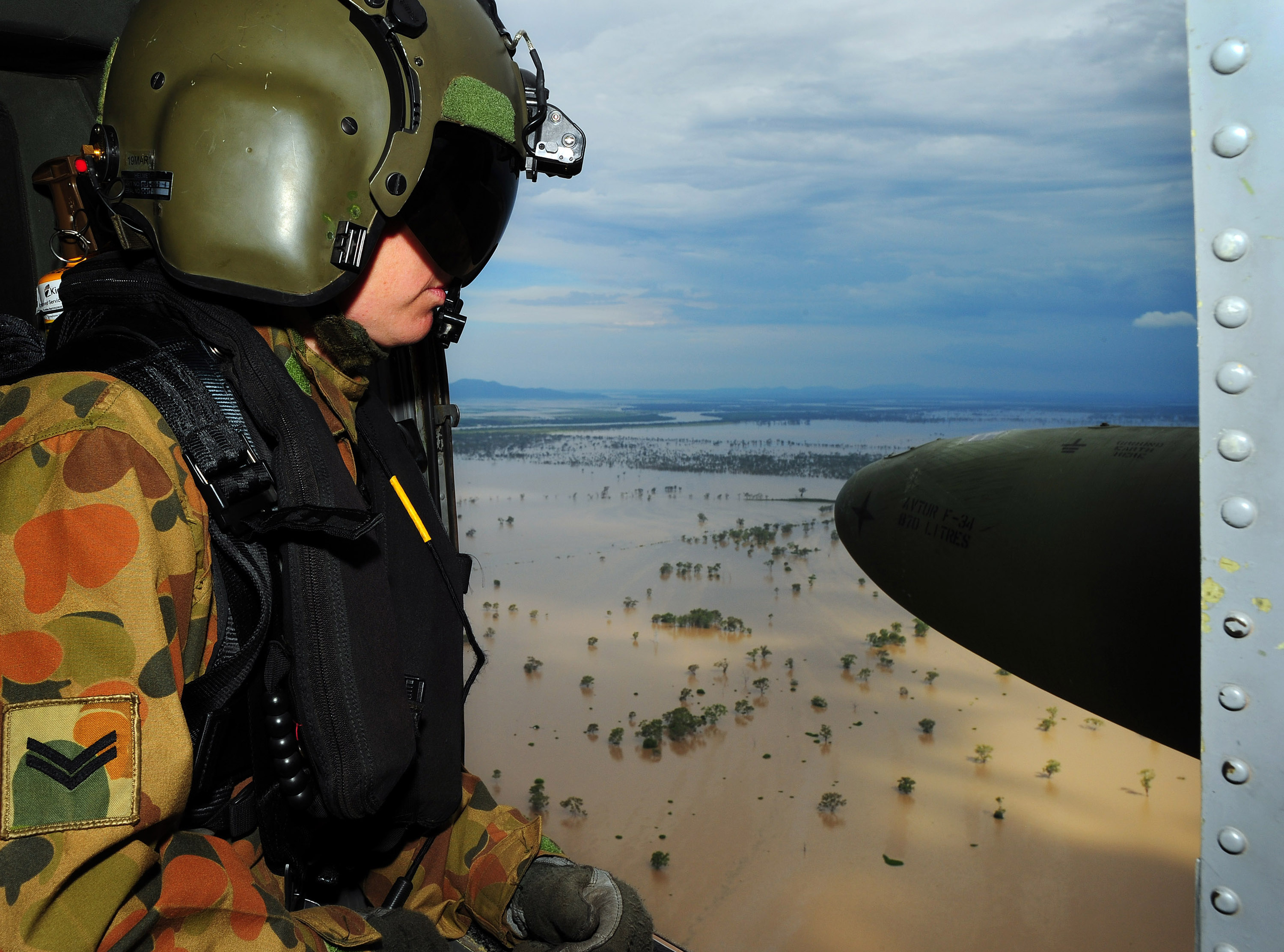 Military interpretations of ‘landscape’ conventionally include notions of strategy, control and domination. They also include environmental factors that might impact Defence’s readiness to carry out conventional military tasks as well as environmental protection from the damage caused by war fighting or large-scale training exercises.
Military interpretations of ‘landscape’ conventionally include notions of strategy, control and domination. They also include environmental factors that might impact Defence’s readiness to carry out conventional military tasks as well as environmental protection from the damage caused by war fighting or large-scale training exercises.
When it comes to the effects of extreme weather events, environmental security is becoming more central to national security thinking.
Late in 2014 the US Government Accounting Office and the UK Ministry of Defence released reports which highlighted the risk climate change poses to national security. The UK Ministry of Defence in particular suggested that climate change is an important ‘megatrend’ which could place strain on food and water security and lead to civilian displacement.
Anthony Bergin recently discussed January’s US Department of Defense Directive on climate change and resilience which mandates that all future DoD planning has to identify and assess the effects of climate change on missions and to consider these effects when developing plans and implementing operational procedures.
NATO, through the Euro-Atlantic Disaster Response Coordination Centre, is also active in coordinating civil emergency planning and response to natural disasters.
So how’s the ADF placed when it comes to facing the challenges of domestic disaster resilience?
DWP 2016 identifies our most basic strategic interest as … ‘A secure, resilient Australia, with secure northern approaches and proximate sea lines of communication’.
A following statement points out that: ‘Our interest in a secure, resilient Australia also means an Australia resilient to unexpected shocks, whether natural or man-made, and strong enough to recover quickly when the unexpected happens’.
The ability to anticipate likely disturbances and their severity is a standard element of disaster planning and preparation.
Over the summer, Defence assisted the national response to Tasmania’s bush fires by providing air lift support for the transportation of a base camp from Victoria to Tasmania. That involved two Air Force C-17A Globemaster III heavy-lift aircraft. This use of heavy lift capability was the most recent example of the ADF’s key role in disaster response.
Defence’s contribution to disaster response and recovery under DACC arrangements is well established, and was the subject of a comprehensive ASPI report some years ago. DWP 2016 does not, however, set out the ADF’s involvement in disaster preparedness or planning roles in its entirety.
The ADF engages with state-based emergency service organisations when providing emergency response support under DACC arrangements. But enhanced involvement by the ADF in the planning and preparation phases of the disaster cycle will require additional, and different, levels of engagement to those currently in place. As Bergin notes, it’ll require more inclusive ADF engagement with state-based emergency services and other support agencies.
It’ll also require broader doctrinal thinking from the ADF when it comes to examining how existing and future capability might be effectively used in domestic disaster management.
Many of the acquisitions outlined in DWP 2016 and the 2016 Integrated Investment Program contribute to real dual-use benefits to enhance national disaster resilience.
Access to sophisticated real-time video and geo-spatial data is one significant aid to disaster planning and preparation ahead of targeted and efficient responses to natural hazards. Both piloted and remotely piloted surveillance and reconnaissance aircraft can play a significant role in acquiring data on land-based conditions—such as fuel loads ahead of a bushfire season—or in rapid damage assessment of cyclonic or flood damage.
The next time a severely destructive disaster occurs in Australia, expect to see our Canberra Class amphibious ships, with on-board hospital facilities and ability to operate without port infrastructure play keys roles in rapid emergency response, evacuation and humanitarian assistance. We recently saw that capability deployed to Fiji after Cylcone Winston. (The subject of the ADF’s role in regional HADR will be considered in my next post.)
Those kinds of capabilities support faster and more accurate decision support and response to natural disasters. They’re examples of what can be achieved by the ADF working across the mitigation and response phases of the disaster management cycle and they demonstrate that network-centric capabilities and data fusion applied to a ‘battle-space’ can also be applied to a ‘disaster-space’ at home just as well.
There are still unanswered questions, however, as to how dual-use elements of our growing national defence capability can be integrated with state capabilities and responsibilities to enhance disaster mitigation and response. When it comes to the use of the ADF, any gaps between federal and state disaster management planning will remain a barrier in achieving effective national disaster resilience.

